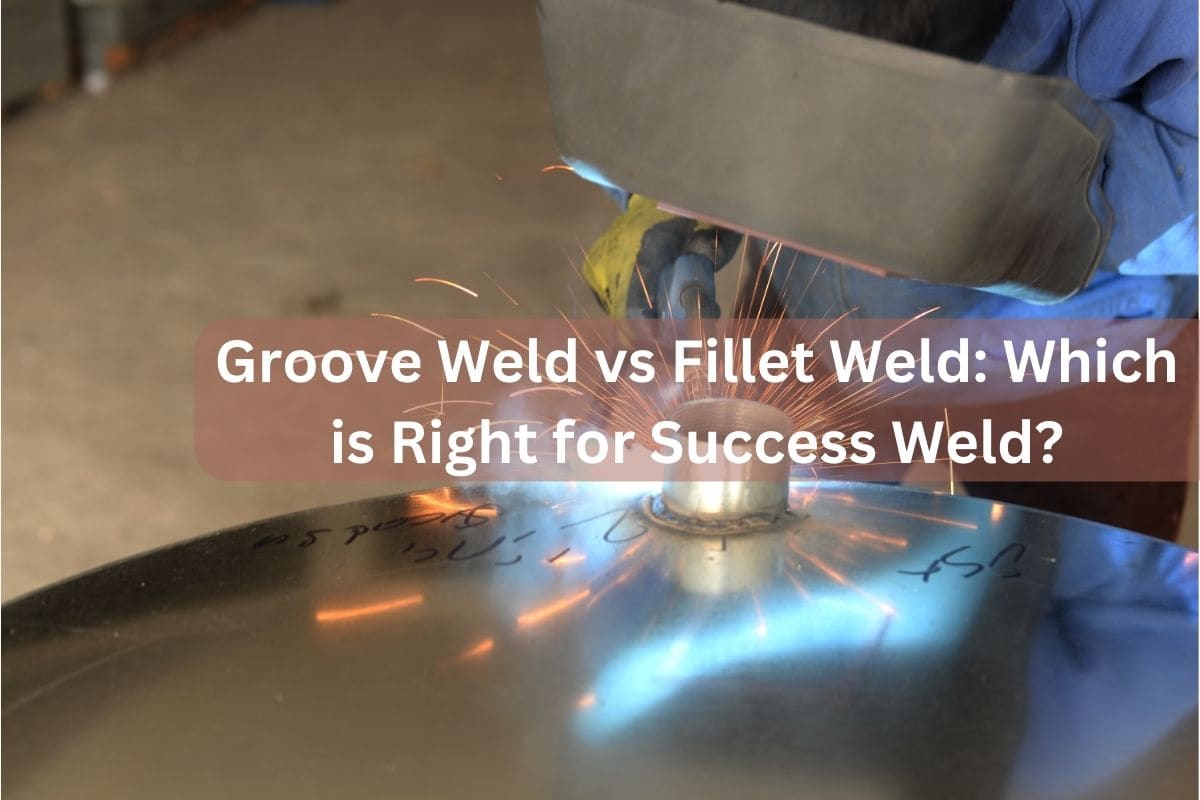Deciding between groove weld and fillet weld is a crucial step for many welding projects. These two methods have their own sets of strengths and weaknesses, which make them suitable for different applications.
This article delves into the contrasts between the two, helping you make an informed choice based on your needs.
Groove Weld: A Deeper Look
- Joint Type:
- Groove welds are primarily designed for end-to-end joints. Think of instances where butt, T, corner, or edge joints are required. It’s the groove weld’s specialty.
- Edge Preparation:
- Here’s where groove weld demands attention. Preparing the edges often means beveling, which can be a meticulous task. However, it’s worth the effort for the strength and finish you get.
- Weld Cross-Section & Profile:
- Depending on the type you choose – be it V-groove or U-groove – the cross-section varies. The weld’s profile is largely influenced by the groove’s design.
- Application Scope:
- Structural welding is groove weld’s playground, especially when you’re working with thicker plates or sections.
Read Also : What is a Groove Welding? Essential, Informative Breakdown
Fillet Weld: An Overview
- Joint Type:
- Fillet welds shine when used for T-joints, lap joints, and corner joints. Their design is optimal for these types of perpendicular connections.
- Edge Preparation:
- A significant advantage of fillet welds is the minimal edge preparation they require. This can save time and reduce labor costs.
- Weld Cross-Section & Appearance:
- These welds have a triangular profile. When done right, you’ll observe a semi-triangular bead, distinct to fillet welds.
- Application Scope:
- Fillet welds find their use in a plethora of applications. If you’ve seen sheet metal fabrication, chances are, fillet welds were involved.
Read Also : What is a Fillet Weld? Impressive Details You Need
How do they match up?
- Strength & Penetration Depth
Groove welds have the capability to achieve full-strength joints, which is often comparable to the base material. They need deep penetration for effective fusion.
Fillet welds, while strong, have their strength dictated by the throat thickness. Surface penetration is typically adequate for them.
- Heat Input & Distortion
Remember that groove welds usually come with higher heat input, leading to potential distortion. It’s essential to be cautious with thinner materials.
On the other hand, fillet welds generate less heat and, consequently, cause lesser distortion.
- Skill, Testing & Consumables
Groove welding demands precision and skill. It often undergoes non-destructive tests, like ultrasonic tests. Moreover, you might need multiple passes and specific consumables.
Fillet welding is the friendlier option for beginners. It’s more visual, easier to inspect, and requires fewer passes and consumables.
Read Also : Welding GAS Cylinder Sizes: Discover the Best Gases
Groove Weld vs Fillet Weld: What should you choose?
The decision between groove weld and fillet weld largely leans on a few factors:
- Application & Design Specifics
Are you working with end-to-end joints in thicker materials?
Groove welds are tailored for such requirements. Their deep penetration and strength make them ideal for these scenarios.
On the flip side, if your project involves T-joints, lap joints, or corner joints, then fillet welds offer an edge. Their design efficiency in these configurations can’t be overstated.
- Strength Needs
Critical applications can’t compromise on strength. If you’re creating parts for bridges, heavy machinery, or any structure where failure isn’t an option, groove welds are your best bet. Their ability to match the strength of the base material is a significant advantage.
But remember, not all projects have such stringent strength needs. If you’re working on tasks where the demand isn’t as high, fillet welds can be a more cost-effective and efficient choice.
- Time, Cost & Skill
Every project has its constraints. If you’re bound by timelines or budgetary limits, fillet welds, with their minimal preparation and quick application, might be your ally.
Conversely, if you’ve got a team of skilled welders and quality is your top priority, groove welding can yield excellent results, especially in thicker materials where precision is key.
- Inspection Needs & Material Sensitivity
Some projects necessitate rigorous quality checks. In scenarios where you need advanced non-destructive testing methods, groove welds are often favored. Their structure and application make them more receptive to these inspections.
Fillet welds, on the other hand, may not be as friendly to such tests. But they score in visual appeal and are an excellent choice for materials that are sensitive to excessive heat.
If you’re working on aesthetic pieces or with materials that can distort with too much heat, fillet welds have got you covered.
Read Also : Why Does Welding Require Math? Essential for Modern Welders
Conclusion
By understanding the nuances of groove weld vs fillet weld, you’re one step closer to mastering your craft. Don’t be disheartened if one method doesn’t suit your needs; remember, each has its realm of brilliance.
As you continue your welding journey, knowing the right method for the right project will prove invaluable. Keep honing your skills, and always strive for the perfect weld!


